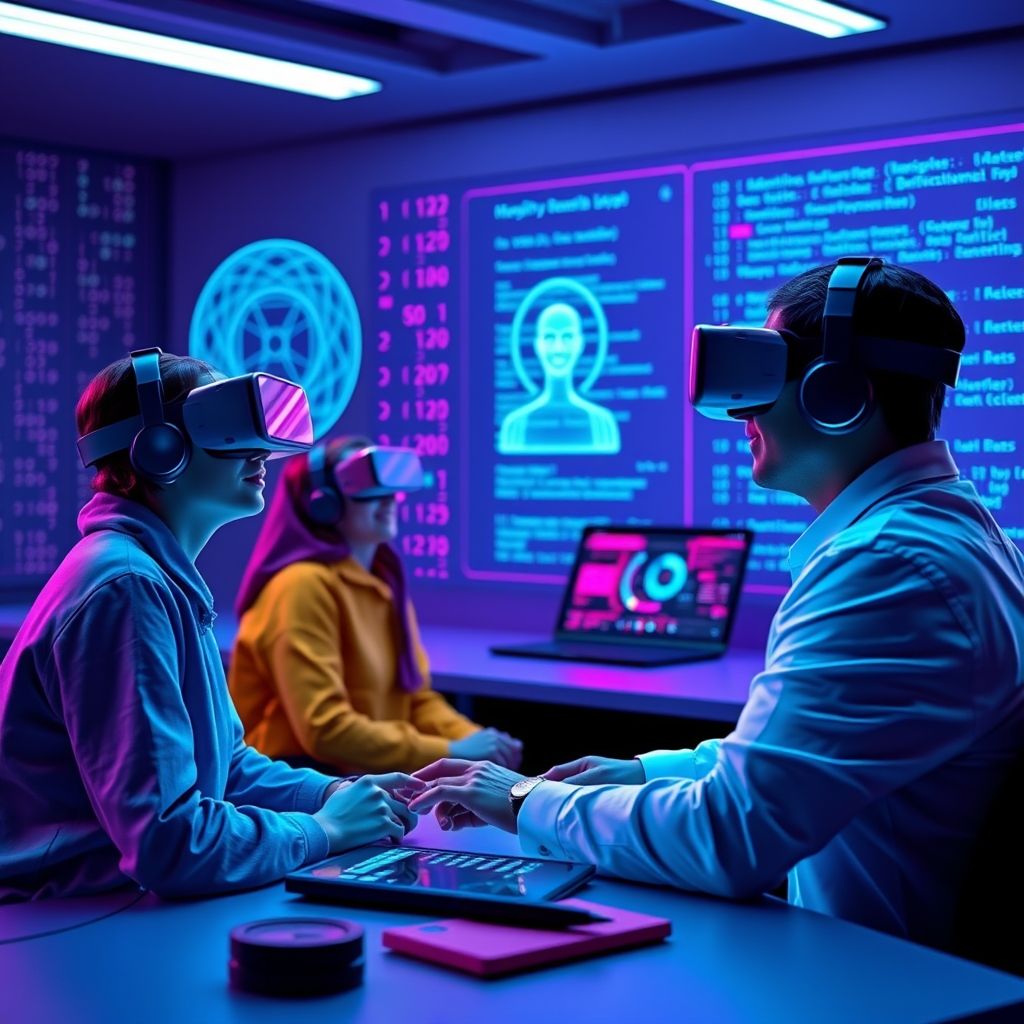AI Ate My Homework: 8 Ways EdTech Will Never Be The Same
Artificial intelligence. The phrase alone conjures images of sentient robots and Skynet-level doom. But before you start stockpiling textbooks and hiding your kids in offline bunkers, consider this: AI’s infiltration of education might actually be… helpful? Maybe?
Okay, maybe not helpful in the warm, fuzzy, teacher-of-the-year kind of way. More like… ruthlessly efficient. Think of it as the educational equivalent of a Roomba vacuuming up all the tedious bits, leaving educators free to, you know, actually educate.
Here are eight ways AI is already (or soon will be) turning the hallowed halls of academia into a slightly less hallowed, and definitely more algorithm-driven, landscape:
1. Personalized Learning: No More One-Size-Fits-All Torture
Remember those standardized tests that felt like they were designed to make everyone feel equally inadequate? AI promises a future where learning is tailored to the individual. Algorithms analyze student performance, identify weaknesses, and adjust the curriculum accordingly. Finally, a learning experience as unique as your crippling fear of public speaking!
2. Automation: Because Grading Papers is Soul-Crushing
Let’s be honest, grading papers is the educational equivalent of cleaning the toilets at a truck stop. AI can automate this drudgery, freeing up teachers to focus on, say, developing engaging lesson plans or mentoring students (or, you know, just taking a nap; we won’t judge).
3. Interactive Teaching Materials: Goodbye, Beige Textbooks
Say goodbye to the days of dry, dusty textbooks. AI can generate interactive lessons, simulations, and virtual master classes that are actually, dare we say, engaging. Think of it as transforming the classroom into a video game, except instead of leveling up your character, you’re leveling up your brain. (The rewards are significantly less flashy, though.)
4. Content Generation: AI, The Ultimate Research Assistant
Need a presentation on the history of the Roman Empire? AI can whip one up faster than you can say “Veni, vidi, vici.” (Though it might need a little fact-checking; AI’s historical accuracy can be… questionable. Just like that “historical” documentary your uncle keeps trying to show you.)
5. Content Recommendation: Netflix, But For Your Brain
AI can analyze a student’s learning patterns and recommend relevant content, turning education into a personalized recommendation engine. Forget aimlessly browsing the library; now you can have a curated selection of knowledge delivered straight to your cerebral cortex. (Side effects may include an insatiable thirst for obscure facts and the inability to hold a conversation that doesn’t involve footnotes.)
6. Immersive Learning: Education That Actually Feels Real(ish)
Virtual reality and augmented reality are merging with AI to create immersive learning experiences. Imagine exploring the Amazon rainforest without leaving the classroom, or dissecting a virtual frog without the ethical qualms (or the formaldehyde smell). It’s like the Holodeck, but for learning. (And hopefully with fewer malfunctions.)
7. AI Assistants and Chatbots: 24/7 Homework Help (With a Caveat)
Need help with a coding problem at 3 AM? An AI-powered chatbot can offer assistance, debug code, and provide feedback. Think of it as a tireless, slightly condescending, but ultimately helpful tutor. Just remember that these chatbots are only as good as the data they’re trained on. So, if your chatbot starts spouting conspiracy theories, maybe it’s time to unplug it and go back to the textbook. (Or, you know, ask a real human.)
8. Wearable Tech: Big Brother is Watching… Your Grades
Smartwatches and other wearable devices can track student performance, monitor stress levels, and even detect signs of fatigue. While this might sound a bit Orwellian, it could also lead to safer and more effective learning environments. (Just try not to think about the fact that your smartwatch is judging your every move. It’s probably judging your fashion choices too.)
The Future is (Maybe) Bright?
The integration of AI into education is inevitable. The key is to ensure that it’s used responsibly and ethically. We need to strike a balance between automation and human interaction, personalization and collaboration. And, most importantly, we need to remember that AI is a tool, not a replacement for good teaching. Or, to put it another way: don’t let the robots do all the thinking.



Leave a Reply